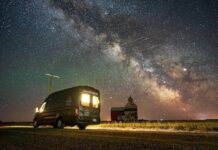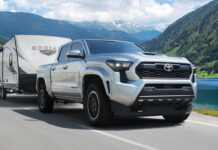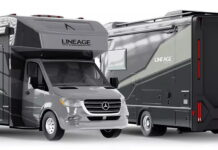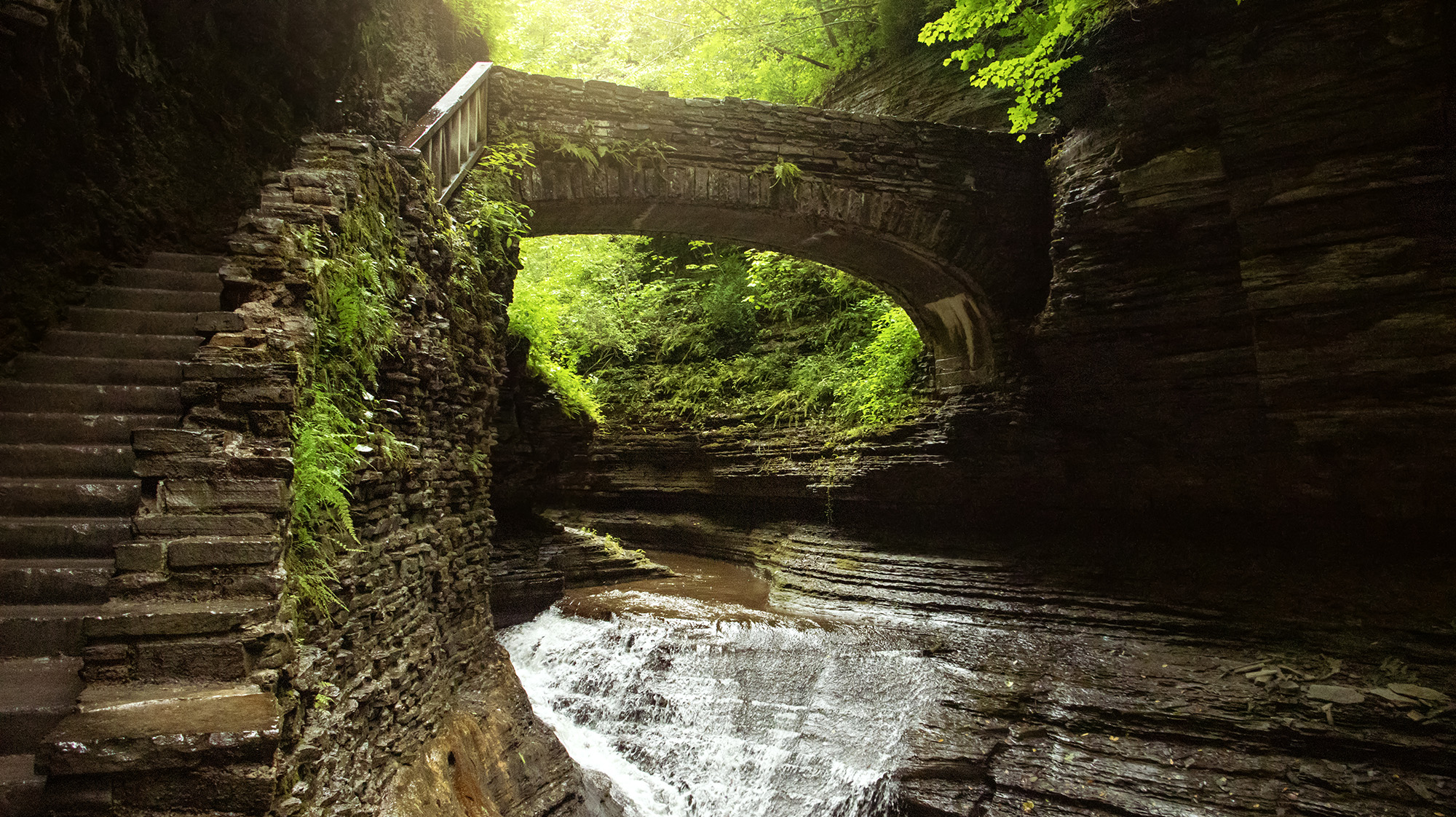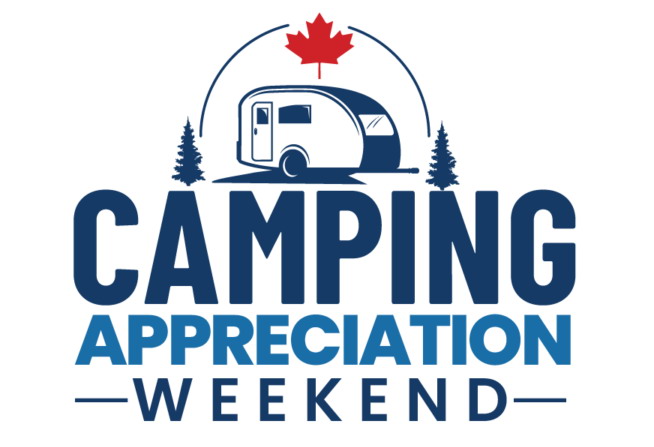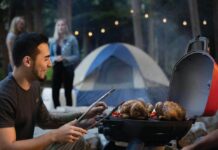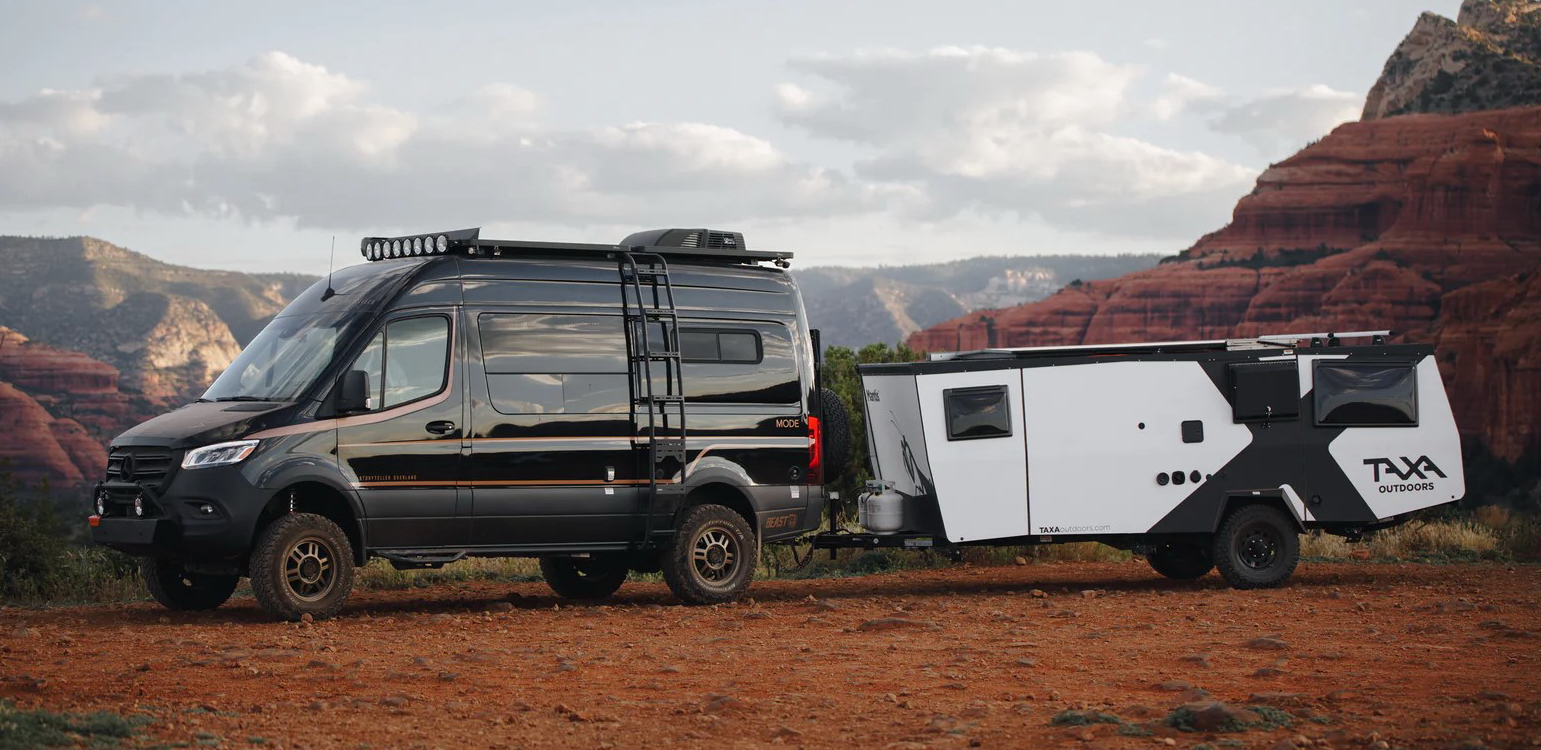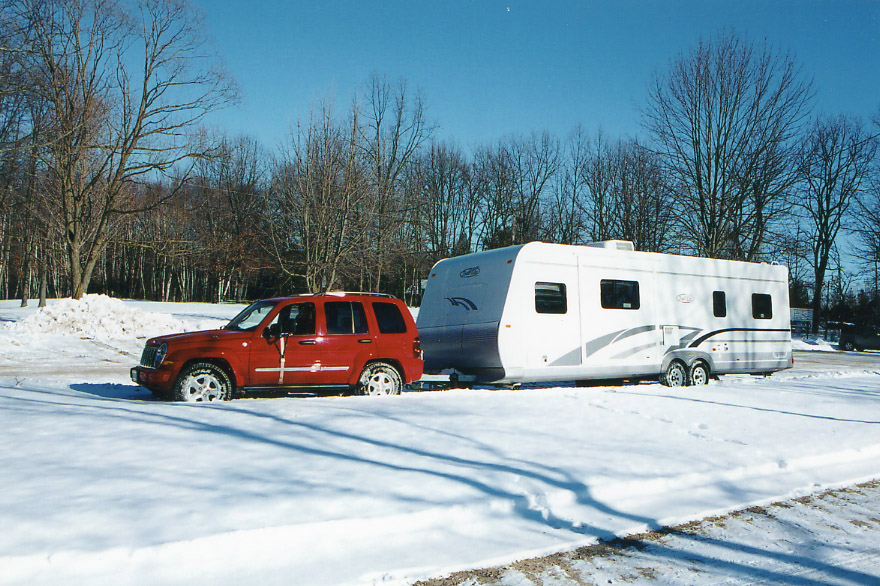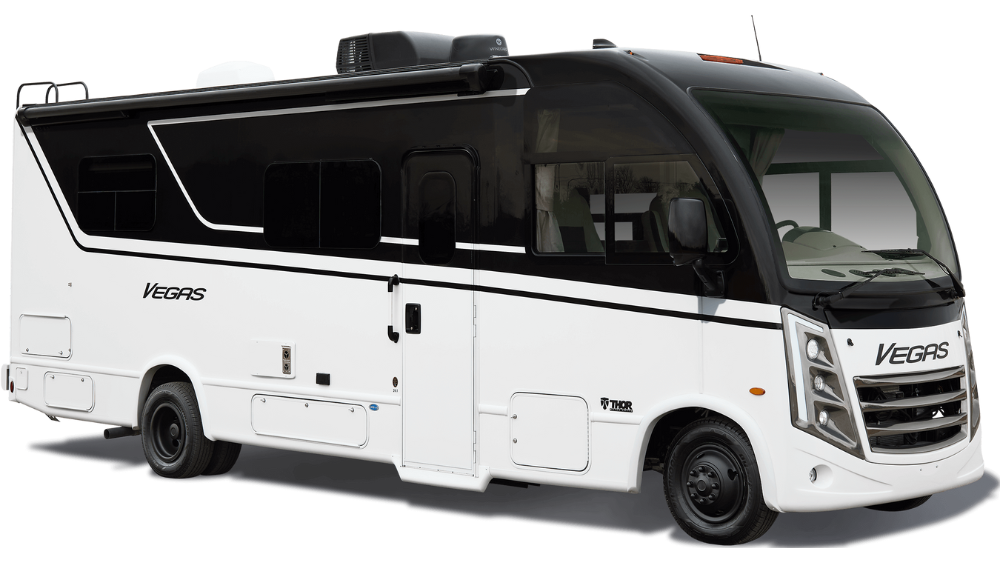From the Archives…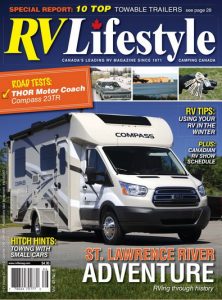 This RV Tips column first appeared in RV Lifestyle Magazine Vol. 45 No. 6.
This RV Tips column first appeared in RV Lifestyle Magazine Vol. 45 No. 6.
To read the full issue, please follow this link and use the password RVLFREE2017 https://77260755.flowpaper.com/456rvlifestyle20170131/
Using your RV in the Winter
By Garth Cane
Many of our readers ask me if it is possible – or practical – to use their RV during the winter months. The answer depends on what you have in mind… are you going to use the RV for weekends, or a lengthy holiday? Are you planning to camp in an area where the weather will be moderate, or really cold? Will you have access to a full range of campsite facilities, or will you be “boondocking”?
Regardless of whether you plan to camp during the winter months, or store your RV until the spring thaw, you have to take a few precautions to protect your RV systems from the cold. When you are getting your RV ready for winter you need to be sure that the fresh and water heater tanks are well drained and the pipes winterized with RV antifreeze. If you plan to use an RV that is parked at a campground, you have to determine what utilities will be available to you. Some campgrounds are open for the winter, some are accessible to limited degrees, and some are not open at all. Even if your campsite will be accessible during the winter months, you have to consider that some of the campgrounds will only have access to electricity during the winter months, and since the roads may not be plowed, your car will be parked near the office. If there is no electricity over the winter, you need to bring a fully charged battery with you to operate the furnace. You could run a small generator during the day to keep it up to charge. Do NOT operate it when you are sleeping.
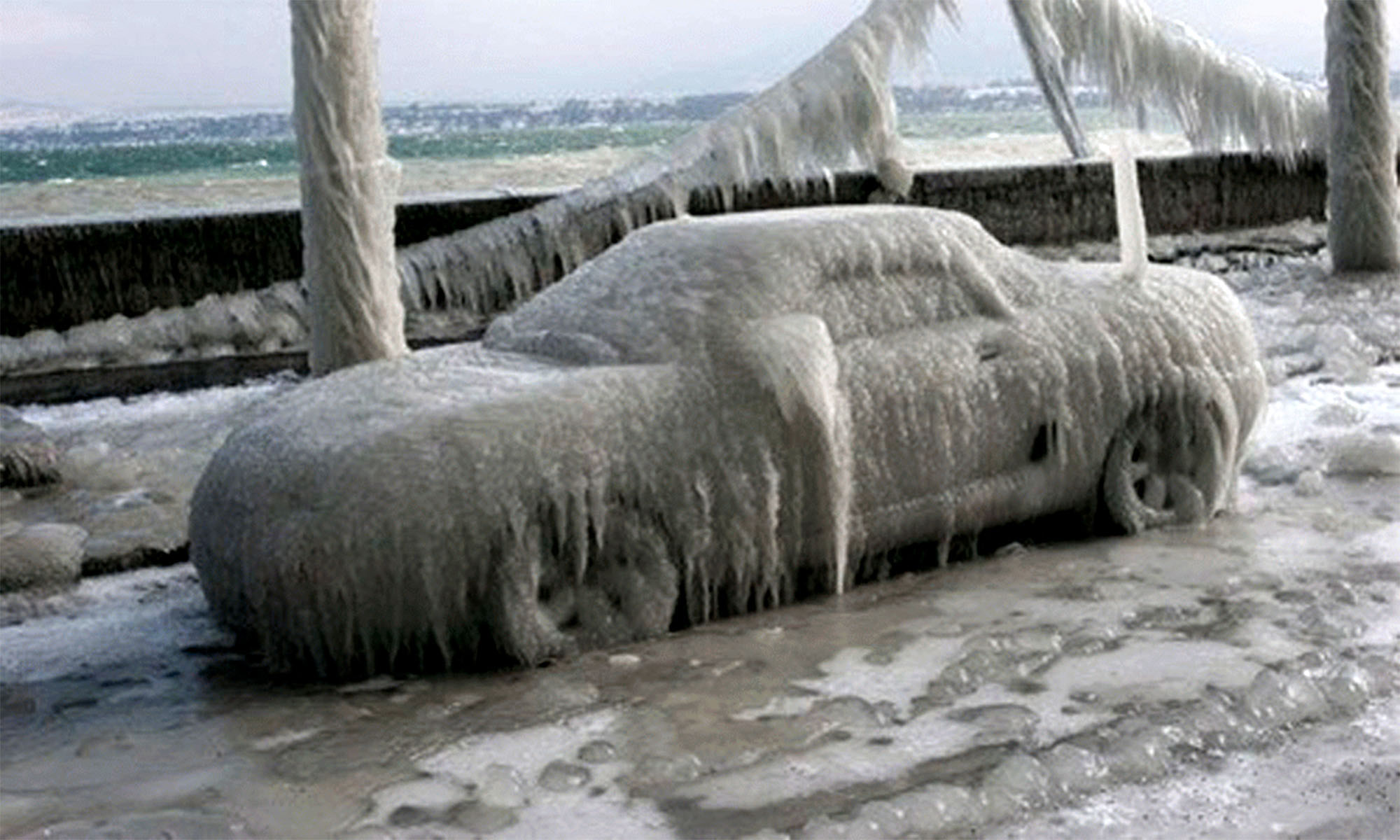
If your RV is parked close to the campground office, it will save a long walk through the snow while you schlep in your supplies for the weekend. If you are only staying for the weekend, bring your fresh water in portable containers that are easy to carry. Remember that water weighs ten pounds per gallon. We store a five-gallon polybag of water on the floor of the shower, and fill a small container that can be placed on the kitchen counter. You can heat the water in a pot on your stove for washing and for meals.
If your RV is parked in a campground near a ski or snowmobile area, the water and sewer system in the park may be accessible, with the hookups protected with insulation and heat tape. In some campgrounds that we have visited during the winter months, we have found the water pipe and faucet wrapped with heat tape and covered with about 2” of Styrofoam insulation to protect it from the frost. You will need a short water hose with a heat tape along its length to connect to the facilities. This tape can be purchased at most RV dealers or hardware stores. The heat tape also needs to be wrapped around the faucet. There are thermostats in the heat tape that are usually set for about 40 degrees F. This is warm enough to prevent freezing. Next, you will need to wrap insulation around the hose to keep the heat in, where it needs to be. If it is not insulated enough, you will use more electricity to keep the hose from freezing.
Just in case, on those frigid nights it is a good idea to allow a small amount of water to keep flowing to prevent the hose from freezing.
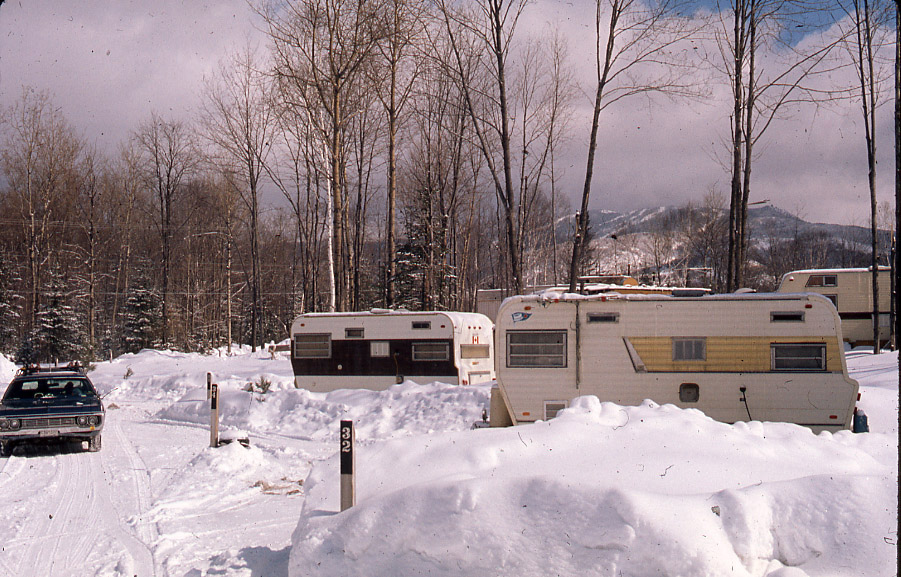
If you have a basement motorhome, your water tank needs some warm air from the furnace to protect it. You can often add another heat duct to help keep that section warmer. The access doors do not normally have any insulation, so add sheet polystyrene foam glued to the inside surface.
Many companies offer extra insulation packages and double pane storm windows as an option when you order a new RV from the factory. The units that have heated basements often lose a lot of the heat as the lower compartments are not well insulated.
Fresh water tanks in many trailers are installed inside the unit, under the bed. If this is the case, make sure that heated air from the furnace can circulate around the water tank by either leaving some cabinet doors open or installing a couple of grills (one on the end of the bed and another at the side, so that the air can move around the tank). Most fresh water piping is inside the RV, so as long as the RV is warm and air is allowed to circulate inside the cabinets and cupboards, the pipes will not freeze.
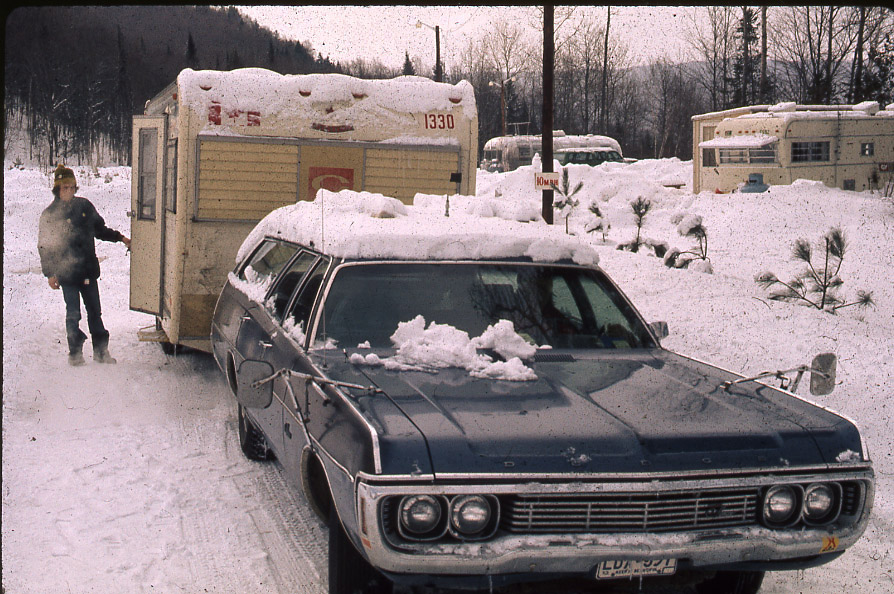
Your dump valves and drain hose also need to be wrapped with heat tape and insulation. I would think about setting up some type of skirting, like bales of hay or piles of snow around the bottom of the unit, to prevent cold air from circulating under the floor. There are heating pads available that can be glued under the holding tanks (both waste and fresh water) that can operate on 120 volts – after the pad is adhered to the tank, cover the bottom with spay foam insulation to keep the heat from escaping.
If you are living in the RV in the cold winter, it is best to rig up a portable entry enclosure so that the cold winds do not blow in each time you open the door. We use this area to clean the snow off our boots before entering the RV. A piece of plastic just inside the doorway will catch any snow that you may have missed. Any snow on this plastic can then be thrown out the doorway. It would be best to have a 100-pound propane cylinder outside instead of the usual 30 pound tanks on the tongue of the frame. Most campgrounds that stay open during the winter have an agreement with a local propane supplier to come and fill up these large propane tanks when needed.
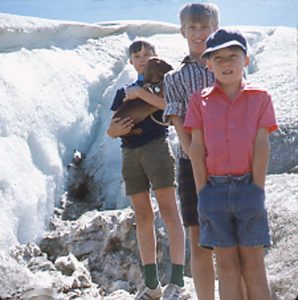 Winter camping requires some attention to areas where cold drafts can enter the unit. There are 14-inch pillow like cushions available from camping suppliers that fit into the roof lumidomes to insulate them, but you have to remember to open the lumidome above the stove whenever you are cooking so that the stove can get enough fresh air for combustion and not produce carbon monoxide. If you don’t have enough ventilation, the windows will steam up with condensation from the moisture given off by your bodies, and during cooking. Keep the lumidome over the stove open about one inch when you are cooking. You may consider installing some temporary storm windows to help keep out cold drafts.
Winter camping requires some attention to areas where cold drafts can enter the unit. There are 14-inch pillow like cushions available from camping suppliers that fit into the roof lumidomes to insulate them, but you have to remember to open the lumidome above the stove whenever you are cooking so that the stove can get enough fresh air for combustion and not produce carbon monoxide. If you don’t have enough ventilation, the windows will steam up with condensation from the moisture given off by your bodies, and during cooking. Keep the lumidome over the stove open about one inch when you are cooking. You may consider installing some temporary storm windows to help keep out cold drafts.
During the day, when we are not in the RV, we lower the thermostat to about 50°F or 60°F degrees to conserve propane. The RV will warm up very quickly when you return and turn up the heat. We use an electric blanket that we place on top of the mattress (without any covers on it). We turn this on to chase away any dampness in the mattress.
At some ski areas, we stay on the parking lots overnight, and make sure that the exhaust pipe for the generator is not buried in a snow bank. At ski areas, you sometimes have to move the RV in the middle of the night to a different location when you hear the snow plow getting close as it clears the parking lot, this is much easier if you are using a motorhome than a travel trailer. You do not want to be buried in a snow drift when it comes time to leave! Most ski areas have a lodge where you can use a clothes dryer to dry the kids clothes for the next day. In some ski resorts where we have stayed, they have movies in the evenings for entertainment.
It is great experience to wake up in the morning to a blanket of white snow, put on your cross-country skis or snowshoes, or jump on the snowmobile and head off to enjoy the winter. There is no reason why you can’t enjoy your RV during the winter months, as long as you prepare for the cold weather, and plan your adventures accordingly.
 For more than 35 years, Garth Cane has been the Technical Director for RV Lifestyle Magazine. He is a member of the Automotive Journalists Association of Canada, was professor of the Apprenticeship program for RV Service Technicians in Ontario, and was inducted into the RV Hall of Fame in 2020. Garth volunteers as Chairman of the CSAZ240 and the Recreation Vehicle Safety and Education Foundation.
For more than 35 years, Garth Cane has been the Technical Director for RV Lifestyle Magazine. He is a member of the Automotive Journalists Association of Canada, was professor of the Apprenticeship program for RV Service Technicians in Ontario, and was inducted into the RV Hall of Fame in 2020. Garth volunteers as Chairman of the CSAZ240 and the Recreation Vehicle Safety and Education Foundation.






